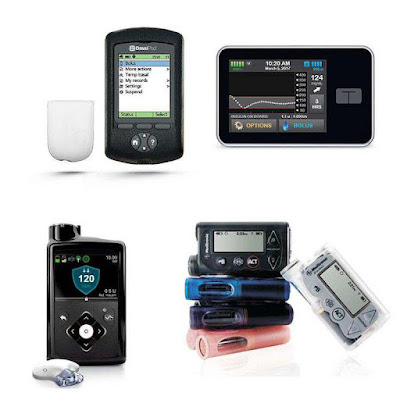Latest technology advancement in insulin pumps are making diabetes treatment more effective than ever
Recent advancements have made insulin pumps easier and more reliable to use, revolutionizing diabetes treatment. By delivering predetermined amounts of insulin to the body, these pumps are gaining popularity and improving the lives of many people.
Introduction
People with type 2 or type 1 diabetes doesn't produce enough insulin, a hormone that helps the body use sugar (glucose), a key source of energy that comes from carbohydrates. To make up for the lack of enough insulin these people will need insulin therapy. Which is carried out with an insulin pumps -These is a medical device that delivers insulin to individuals diagnosed with diabetes. It is an alternative to traditional insulin injections that offer better control over blood sugar levels by delivering precise and continuous dosages of insulin throughout the day. The pump is a small computerised device that pumps insulin through a catheter inserted under the skin. Recent technological advancements have significantly impacted the effectiveness of insulin pumps.
Features of the newest insulin pumps
- Continuous glucose monitoring
CGM technology enables real-time blood sugar monitoring, enabling users to finely tune the dosage of their insulin. This helps users manage their diabetes proactively and more efficiently, instead of relying on manual methods for tracking and adjusting insulin levels.
- Use of closed up loop also known as artificial pancreas system
This system automates and simplifies the process of delivering insulin to a patient. The artificial pancreas system monitors blood glucose levels and automatically adjusts insulin dosage, practically eliminating the possibility of dangerous episodes of both hyper- and hypoglycemia. As a result, patients can be more confident and proactive when it comes to managing their condition.
- Bolus calculator
The latest insulin pumps often come with a built-in bolus calculator, which can make calculating insulin dosages a breeze. It allows users to enter parameters such as current blood sugar level, carbohydrate intake, target blood sugar, desired mealtime insulin dose, and correction insulin dose. It then produces the optimal amount of insulin to use. This feature helps users make more accurate calculations and helps to prevent errors and mistakes that can come with manual calculations. It also helps ensure proper insulin intake for a healthy and safe lifestyle.
- Compatibility with smartphone app
They are also designed with added convenience and usability in mind. The compatibility with smartphones via an app allows users to more easily review their blood glucose results. This feature proves to be especially useful for those who might be out and about and need to check their levels quickly and easily. It also delivers alerts when results reach dangerous thresholds so users know to act immediately. All of this helps eliminate the guesswork when dealing with insulin levels, making life easier for diabetic patients.
- Compatibility with carelink
The latest insulin pumps are now compatible with Medtronic CareLink Connect app that allows users to easily share data with family and friends. It is a convenient way for users to keep their loved ones informed about their medical data and even provides personalized insights. The app also helps in identifying trends and patterns which can help caregivers to provide better support to users. The app also helps users to easily manage reminders and schedule tasks for better care.
- Exercises setting
They offer an exercise setting that tailors target glucose levels to the individual’s activity level. This setting adjusts insulin dosage and carb intake to maintain proper glucose levels during physical activity. The pump also accounts for exercise duration, intensity and other factors that can affect blood sugar levels. With this setting, users can better manage their diabetes during periods of physical exercise, reducing the risk of hypoglycemia or hyperglycemia.
- Alarm
They feature alarms to alert users to potentially dangerous conditions such as low and high glucose levels, missed insulin boluses, missed sensor readings, and other issues related to insulin delivery. These alarms can provide peace of mind and allow users to take corrective action quickly and effectively. The alarms may also be adjusted to meet the user’s individual needs and preferences. This can ensure that an insulin pump user stays on top of their health without having to constantly check their glucose levels throughout the day.
How do insulin pumps benefits people with diabetes
Insulin pumps provide greater flexibility for people with diabetes by allowing for more precise dosing of insulin according to the body’s needs.
They are also easier to use than traditional methods such as syringes, since they are very discreet, lightweight and can be worn comfortably. Insulin pumps can also lead to better blood glucose levels, as they allow for more accurate adjustments to insulin depending on the person’s current needs.
- Reduced risk of diabetic ketoacidosis.
- Fewer blood sugar high and lows.
- Improved AIC levels, A normal A1C level is below 5.7%, a level of 5.7% to 6.4% indicates prediabetes, and a level of 6.5% or more indicates diabetes. Within the 5.7% to 6.4% prediabetes range, the higher your A1C, the greater your risk is for developing type 2 diabetes.
- Reduced need for daily injections
Why insulin pumps are becoming popular
Another reason why insulin pumps are becoming more popular is that they are becoming more affordable. In the past, insulin pumps were only available through private insurance companies, but now they are becoming more accessible to people with public insurance. Overall, insulin pumps are becoming more popular because they are more effective.
In conclusion, insulin pumps are an essential tool for individuals with diabetes. Technological advancements have made them more effective than ever before, and they are becoming smaller, more comfortable, and easier to use. If you have diabetes, talk to your doctor about whether an insulin pump is right for you.

.jpeg)

Comments
Post a Comment